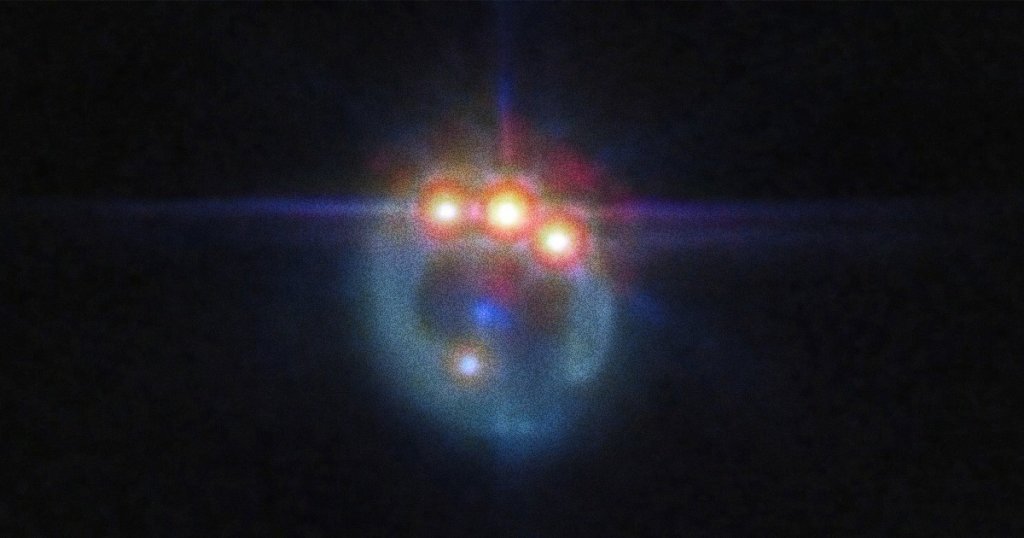
James Webb Spots Distant Space Object With Jewel-Like Lights (Image Credit: futurism-com)
Ooh, shiny.
Glitter Galactic
The James Webb Space Telescope has an eye for bling.
A new image released by the European Space Agency shows the powerful telescope’s latest — and decidedly glamorous — finding: a bright quasar that looks like a “bejeweled” ring.
Quasars are a luminous form of active galactic nuclei — essentially, a supermassive black hole at the center of a galaxy that shines from the huge amount of energy it emits caused by the gas and dust it devours.
This particular quasar, known as RX J1131-1231, is located about six billion light years away in the constellation Crater. From our terrestrial perspective, the object appears to be a circle studded at the top with three bright spots — like some cosmic deity’s snazzy championship ring.
Gravity Giveth
You might be disappointed to learn, however, that this is partially an illusion — but don’t be. What we’re seeing is caused by a phenomenon called gravitational lensing, when the gravity of a massive object bends the light of a more distant one.
In this case, the light of the extremely far-out quasar is being warped by the gravity of an interposed galaxy — the blue dot in the middle of the ring — concentrating it so that it acts as an enormous magnifying glass.
Gravitational lensing is useful to astronomers because it allows them to observe the faint light from distant objects that they normally wouldn’t be able to see. But, if the alignment of the objects are off, it can also cause illusions like the one we see here. Those three bright spots are actually the quasar, duplicated twice. The “ring” itself, meanwhile, is the distorted image of the more distant galaxy.
Dark Secrets
Still, gravitational lensing enables us to see regions this close to the black hole in such distant quasars, according to the ESA. Studying the x-ray emissions from quasars, for example, can tell us how fast the black hole is spinning and how it formed.
Some are formed from gradually accreting small amounts of matter from random directions over time. But because this black hole is spinning at over half the speed of light, it likely grew from epic mergers between galaxies, which created a disc that the black hole could regularly feed off without interruption, leading to the rapid spinning.
This image was made using the James Webb’s Mid-Infrared Instrument (MIRI), as part of a broader ongoing study of dark matter — and these observations could be an invaluable contribution to that pursuit, as astronomers turn to quasars to unearth the secrets of that invisible substance.
More on the James Webb: James Webb Spots Habitable, Icy Exoplanet Relatively Close to Earth





